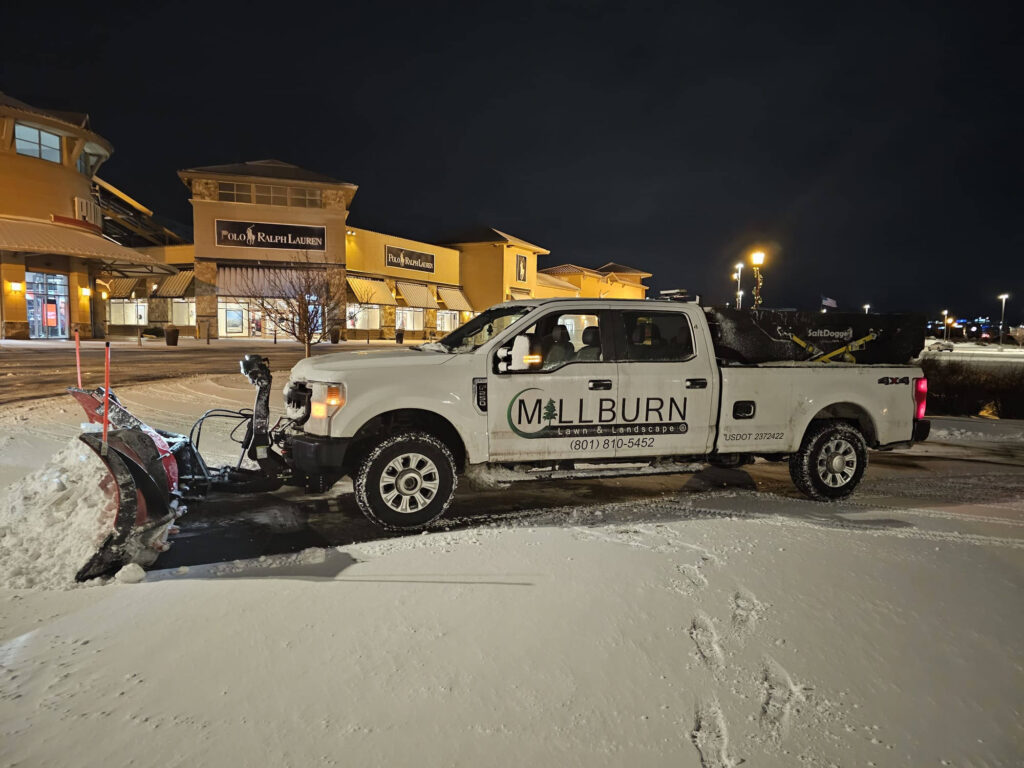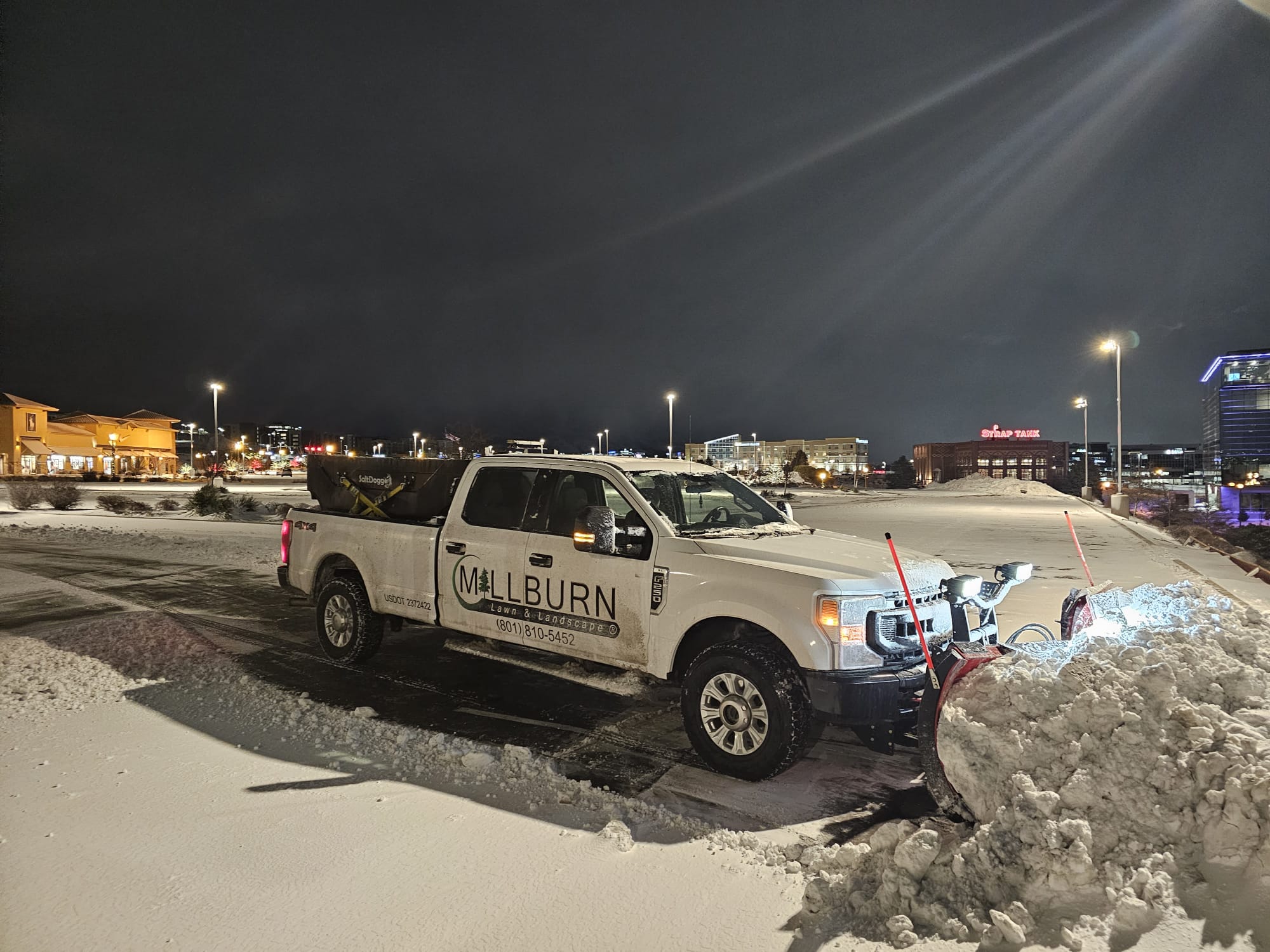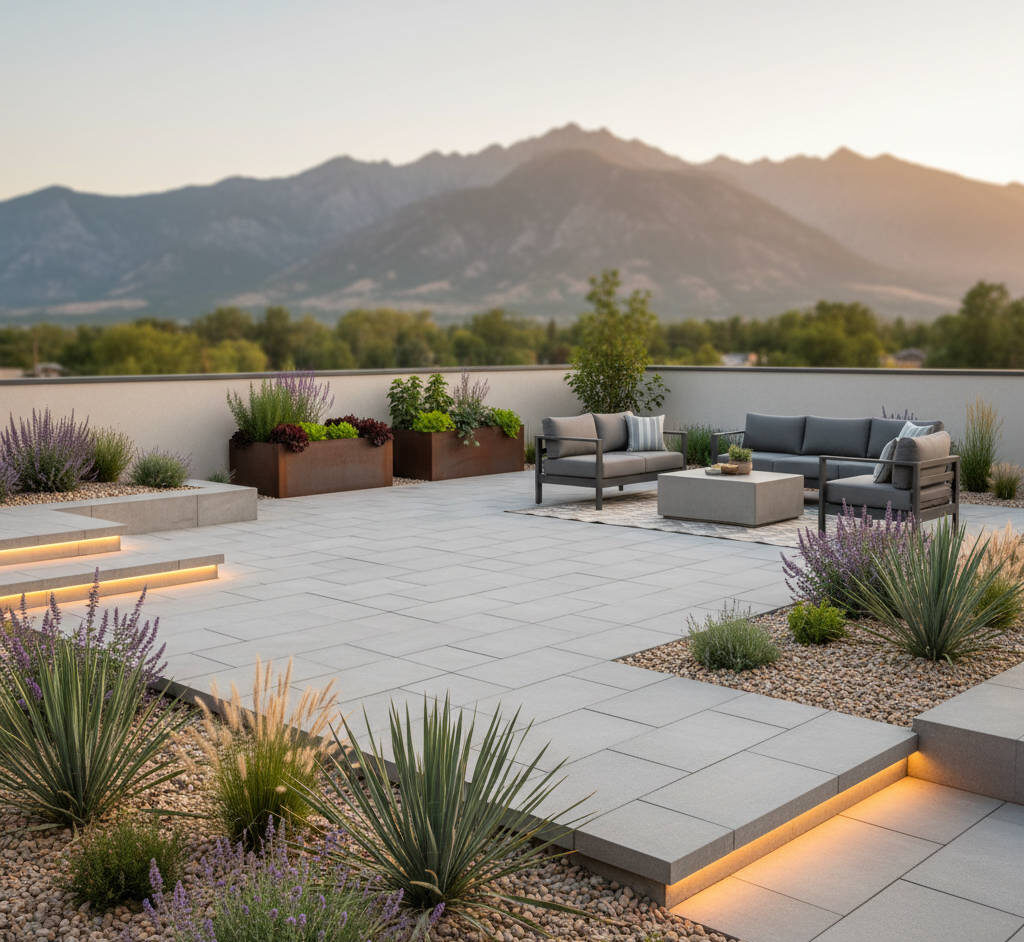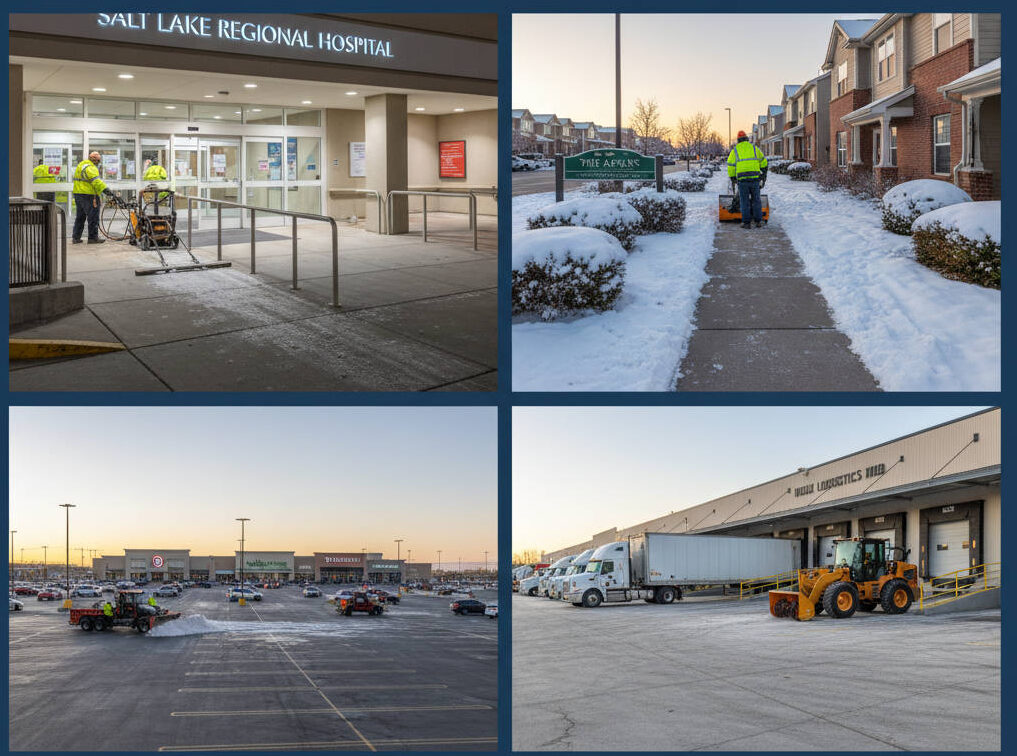The Danger That Hides Beneath the Snow
It’s 6:45 a.m. in Salt Lake City. Employees start pulling into the parking lot. The asphalt looks clear, maybe just a little wet from last night’s storm. Then, within seconds, a boot slips — and a morning commute becomes a serious injury.
That’s the danger of black ice — the “invisible hazard” that forms when melted snow refreezes into a thin, nearly transparent sheet of ice. For business owners, it’s one of the biggest winter risks, because it’s easy to miss until it’s too late.
At Millburn Lawn & Landscape, we’ve seen firsthand how overlooked ice can turn safe properties into liability traps. Here’s what you need to know about black ice prevention in Salt Lake City — and how to protect your business from accidents before they happen.
What Is Black Ice and Why Is It So Dangerous?
Black ice isn’t actually black — it’s transparent. The term comes from how it blends with dark pavement, making it nearly invisible under headlights or morning sun.
In Utah, black ice typically forms when:
- Daytime snowmelt refreezes overnight.
- Vehicles compress slush into thin, smooth layers.
- Rain or mist freezes on cold asphalt.
- Temperature fluctuations cause multiple freeze-thaw cycles in a single day.
Even a few millimeters of black ice can cause slips, falls, and vehicle skids. On commercial properties, it’s one of the most common causes of winter injuries — and one of the hardest to defend in court.
How Black Ice Becomes a Lawsuit Trap
Utah law requires business owners to maintain reasonably safe walkways and parking areas during winter. Failure to address snow or ice can lead to premises liability lawsuits, even if the property looks clear.
Common claims include:
- Slip-and-fall injuries on untreated surfaces.
- Car accidents caused by unseen ice patches.
- Employee injuries on entryways or loading docks.
Without proof of proactive maintenance, insurance companies often side with injured parties — leaving property owners with costly settlements.
That’s why parking lot de-icing in Utah isn’t just a maintenance task — it’s legal protection.
The Science of Prevention: How Professionals Eliminate Black Ice
Professional snow and ice management companies use science, timing, and specialized materials to prevent black ice before it forms.
1. Pre-Treatment with Brine Solutions
Liquid brine — a mixture of salt and water — is applied before storms to create a barrier that prevents ice from bonding to the surface. It’s more effective and eco-friendly than rock salt, using less material for better results.
Millburn’s black ice prevention program includes strategic brine applications before overnight freezes. This keeps parking lots safer and dramatically reduces refreeze potential.
2. Temperature and Moisture Monitoring
Crews monitor both air and pavement temperatures using digital sensors. When surfaces drop below freezing, preemptive de-icing is triggered automatically.
3. Post-Storm De-Icing Treatments
After plowing, crews apply granular or liquid de-icers in high-risk zones like shaded areas, entrances, and slopes. This ensures residual moisture doesn’t refreeze into black ice.
4. Routine Inspections and Documentation
Millburn provides time-stamped records and photos of every service. This not only ensures quality control but also serves as critical documentation in case of liability claims.
Why DIY Salt Spreading Isn’t Enough
Many property managers assume that tossing rock salt on icy areas solves the problem. Unfortunately, traditional salt has limitations:
- It’s less effective below 15°F.
- It can damage concrete and landscaping.
- It only works after ice forms — not before.
Brine systems and professional-grade de-icers melt ice faster, last longer, and minimize environmental impact. Combined with strategic timing, they provide 24-hour protection against the conditions that create black ice.
High-Risk Areas for Black Ice in Utah Parking Lots
Even the best-maintained properties have danger zones. Pay extra attention to:
- North-facing sections that never receive sun.
- Drainage points where meltwater refreezes overnight.
- Loading docks and ramps with vehicle traffic.
- Entrance walkways where heat from buildings melts snow that later refreezes.
Millburn’s crews identify and map these areas during pre-season inspections, creating a targeted slip-and-fall prevention strategy for each site.

Don’t let invisible ice cost you thousands.
Millburn Lawn & Landscape provides expert black ice prevention and parking lot de-icing across Salt Lake City and Utah County. Our pre-treatment brine systems, overnight monitoring, and safety documentation keep your business open and liability-free all winter long.
Call (801) 810-5452 or visit Millburn Landscape to schedule your commercial ice prevention plan before the next freeze.
Frequently Asked Questions
Q: What temperature does black ice form?
A: Black ice typically forms when pavement temperatures drop below 32°F, especially after daytime melting.
Q: How can businesses prevent black ice without overusing salt?
A: Brine pre-treatments and targeted de-icing minimize salt use while providing long-lasting protection.
Q: How often should de-icing occur?
A: Professional crews inspect and treat high-risk areas daily during active freeze-thaw cycles.
Q: Can black ice form on treated surfaces?
A: Rarely. Proper pre-treatment dramatically reduces the chance of formation, even during temperature swings.
Q: Is brine safe for concrete and plants?
A: Yes, when applied professionally. Millburn’s brine mix is engineered to prevent surface damage and runoff contamination.



